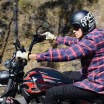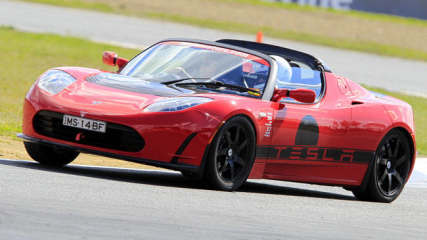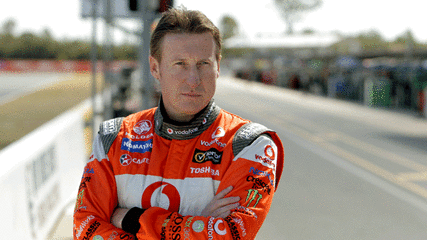Triumph Rocket III 2011 Review
By Mark Hinchliffe · 30 Aug 2011
THE last time I rode the Triumph Rocket III Touring I had a heart-in-the-mouth incident involving a locked rear tyre on a wet downhill slope. My review said the bike needed ABS like the Harley Touring family. Well, ask and you shall receive. It now comes standard with ABS.VALUEThe good news is it doesn't cost any more now with ABS. At $25,9990 it beats the American opposition (Harley-Davidson Heritage Softail $29,995 and Victory Cross Roads $26,990) and compares favourably with some of the Japanese "metric" cruisers. There is extra value in the fact that the windscreen is quickly detachable as this makes it more of an all-seasons proposition.TECHNOLOGYThe Rocket has the largest engine of any production motorcycle in the world, bigger than most medium-sized family cars. It's 2.3-litre, three-cylinder heart has the lustiest beat of any bike on the road.Don't be discouraged by peak power of 80kW which is down from 104kW in the Classic as it is tuned for a fat midrange of 209Nm from just 2000rpm. The transmission is via a faultless and smooth five-speed gearbox and shaft drive.SAFETYHave I mentioned it now comes with ABS? Not that the contact patch on the big front and rear wheel tyres lack for grip, but with the low centre of gravity, there is a lot more stopping power in the rear brake than on most bikes, so it can be easy to lock up the rear wheel, especially in the wet. However, ABS takes car of that. On a weekend two-up ride through country with some damp sections, I never felt the ABS come into play, but it was comforting for my nervous pillion to know that it was there if needed.DESIGNThe Touring model turns heads wherever it goes. It looks like the Classic model with a windscreen and panniers, but the only parts they share are the rear light, mirrors, brakes and the engine. Even the seat is different, with two separate layers of cushioning of different densities and a gel pad in the pillion seat. These are among the 59 accessories designed exclusively for the Touring variant, including back rests, mufflers, heated grips and chrome parts.It comes with hard panniers and a look-over windscreen, but you can replace these with after-market options. The top-loading and lockable 36-litre standard hard luggage compartment is neat and streamlined. However it is a bit narrow, so it won't fit much gear. Both the luggage and windshield have a quick-release system that is easy to remove and fit.Riding position is good for long stints with your legs splayed around a fat tank and feet on wide footboards with an adjustable heel-toe gear shifter. However, I found the straight-out reach to the wide bars a little fatiguing.RIDINGNot that I should refer to my wife as a load, but most of this test was spent two-up and the big triple didn't seem to notice the extra load. Gearing is tall and torque is huge so you don't need to rush through the gears nor do you find yourself in fifth looking for one more cog.My wife commented that the gel seat is comfortable, but the seat sash is useless as a grab handle. Instead, she held on to me, which is nice, but not ideal. She would also opt the optional sissy bar for back support.Handling is actually improved a little by the extra weight over the rear wheel as it prevents that bouncing feeling over big bumps. It could do with a little more rebound damping in the rear springs.Small, high-frequency bumps are handled well and the bike never bottomed out over the big hits, even two-up. A pillion also helps the steering, making the front a little lighter and more nimble for counter-steering into corners. The narrow rear tyre also assists agile turn-in. Lean angle is good with the peg scraping only when your are pushing hard or hitting a mid-corner bump with a pillion on board.VERDICTIt's called the Touring and invites two-up riding over long distances. The only limiting factors are the narrow panniers and the 22.3-litre tank which has range of about 300km when fully loaded.TRIUMPH ROCKET III TOURINGPrice: $25,990Warranty: 2 years/unlimited kmService: 10,000kmEngine: liquid-cooled, fuel-injected 2294cc triple, 80kW/209NmTransmission: 5-speed, shaft driveWheels: 25-spoke 16-inch alloysTyres: 150/80 R16; 180/70 R16Suspension: Kayaba 43mm forks (front), Kayaba twin shocks, with preload adjustment (rear)Brakes: 320mm floating discs, Nissin 4-piston fixed calipers (front), 316mm disc, Brembo 2-piston floating caliperFuel: premium, 22.3-litre tank, 7.7L/100km (tested)Dimensions: 2608mm (L), 895mm (W), 1182mm (H), 736mm (Seat), 1708mm (WB) DRY WEIGHT: 362kgColours: black (with hand-painted silver pinstripes), black and white, black and red, and two-tone blue.Visit www.triumphmotorcycles.com.au for more information.















